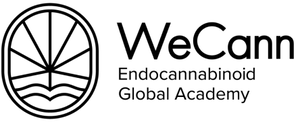The Cannabis plant is native to the Eurasian region, more precisely to Central Asia, northern India, and western China. Cannabis can easily adapt to different altitudes, soil types, and climatic zones, easing its wide dissemination worldwide.
Contrary to what many people think, the greatest therapeutic potential of the plant is in its flower and not leaves. The primary chemical compounds of therapeutic potential, terpenes, and cannabinoids, such as cannabidiol (CBD) and tetrahydrocannabinol (THC) are found in cannabis flowers.
In this post, we will talk about the primary chemovar of Cannabis and the entourage effect that occurs when using the entire extract of the plant for medicinal purposes.
The main chemovar in Cannabis
Several discussions and controversies exist regarding the classification and taxonomy of species that comprise the genus Cannabis. However, the consensus is that the plant encompasses three main chemovars.
Type I chemovars
- Predominantly rich in THC.
- Highly sedative and relaxing potential.
- Higher potential for cognitive and mood alterations.
- A narrower therapeutic window between therapeutic and adverse effects.
- Low potential for generating dependency.
Type II chemovars
- Proportionally rich in THC and CBD.
- Moderate sedative and relaxant potential.
- Moderate potential for cognitive and mood alterations.
- A wide therapeutic window between therapeutic and potential adverse effects.
- Very low dependency potential.
Type III chemovars
- Predominantly rich in CBD.
- Virtually no psychoactive effects.
- No risk of generating dependency.
What about Hemp?
Cannabis is also known as hemp; however, hemp is not exactly a Cannabis species. Culturally, varieties of Cannabis plants that are high in fiber and low in THC have been called hemp. This nomenclature has become a legal convention according to the norms of each country.
In Europe, hemp is considered a Cannabis variety having less than 0.2% THC. In the United States, THC content allowed is 0.3%.
What is most relevant in hemp is its enormous industrial potential. It is extensively used in synthesizing paper, fabric, rope, plastic, and even brick for civil construction.
Therapeutic potential of Cannabis and the entourage effect
Cannabis belongs to the group of angiosperms, plants having both flowers and fruits.
The highest therapeutic potential is present in flowers in the form of phytocannabinoids and terpenes. When female plants are deprived of pollination, their flowers become more robust, resulting in even higher chemical compounds.
Phytocannabinoids are not unique to the Cannabis plant. Other plants, such as certain sunflower species, are also rich in cannabinoids.
Although CBD and THC are the best-known cannabinoids of Cannabis chemovars, these species consist of more than 500 chemical compounds, between cannabinoids and non-cannabinoids. All of them have a high therapeutic potential.
Os terpenos, que mencionamos acima, também compõem esse grupo de substâncias, sendo mais de 120 já descritos.
Terpenes contribute to the aroma of plants, functioning as a natural repellent. In medicinal terms, they represent a vast therapeutic arsenal, interacting with cannabinoids to stimulate various physiological and therapeutic effects.
Entourage Effect,
An optimal result in cannabinoid therapy is obtained when all these elements are used together.
This is known as the entourage effect, which results from using the complete extract of the plant (cannabinoids, terpenes, flavonoids, and other substances) and not just isolated parts.
These compounds act in synergy with each other to potentiate the therapeutic effects and also modulate the potential adverse effects of Cannabis-based medicines.
A 2018 study compared a group of patients with severe refractory epilepsy who were administered isolated CBD and a group of patients with the same condition who were administered CBD-enriched Cannabis extract.
The results were compelling, showing that on average, 4 to 6 times more doses of isolated CBD than of the CBD-rich extract were required to achieve the same therapeutic effects.
The higher the dose of a drug, the greater the tendency for adverse effects. Therefore, prescribing the complete plant extract (full-spectrum products) is more effective and safer than prescribing isolated compounds due to the entourage effect. prescrever o extrato completo da planta (produtos full spectrum) é mais eficaz e seguro do que prescrever compostos isolados.
Phytocannabinoids CBD and THC
Although CBD is more widely used in cannabinoid therapy, the therapeutic potential of THC should not be neglected, because THC has unique properties compared to CBD in the context of chronic pain, neuropathic pain, dementia, spasticity, and cancer.
A study by Evans and Balster who, in the 1990s, reinforced the analgesic and anti-inflammatory potencies of THC, proved that THC is 20 times more potent than aspirin and twice as potent as hydrocortisone.
However, because of its psychoactive potential, THC is still a cause for concern in cannabinoid therapy. The psychoactive potential should not be confused with psychotoxic potential. Similar to THC, CBD also has psychoactive potential, although it does not have the intoxicating potential of THC.
That is, CBD, although does not exhibit psychotoxic effects, can alter the state of consciousness of people, causing drowsiness, for example, especially when prescribed as isolated CBD.
Um estado eufórico decorrente do uso medicinal de THC pode significar uma experiência transformadora para muitos pacientes que estão em estado de sofrimento profundo, físico ou psíquico. Esses efeitos incluem bom-humor, sensações de relaxamento, redução da ansiedade, facilidade de socialização e intensificação do prazer em atividades cotidianas, como alimentar-se ou escutar uma música.
These euphoric moments are not related to psychotoxicity. A psychotoxic picture due to inadequate dosage of THC would be characterized by effects such as psychomotor agitation, generalized anxiety, and visual and auditory hallucinations.
In practical terms, the psychotoxic reactions of THC are rare when cannabinoid therapy is administered in a contextualized and individualized manner, according to the history of each patient and the profile of the product being prescribed.
Therefore, it is essential to know the primary chemovars of Cannabis and understand the therapeutic potential of cannabinoids used, combining assertiveness, safety, and efficacy in treatments.
If this information was helpful to you, download this infographic and learn more about Cannabis chemovars and the therapeutic properties of the main phytocannabinoids CBD and THC.




